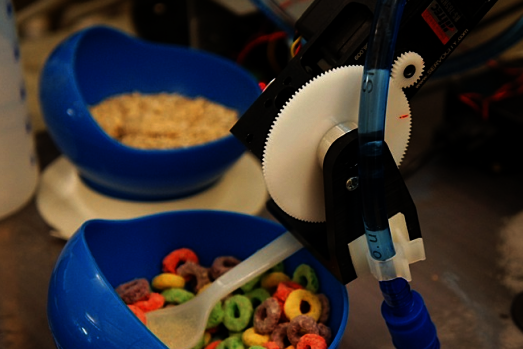New use of the iPad in the operating room
Gaus Surgical Inc. has created a medical platform which uses the iPad to measure blood loss during surgery. Right now anesthesiologists measure blood loss visually, a process that can be imprecise and therefore cause significant problems for the patient’s health. The new platform uses the iPad to scan surfaces that are covered in blood, such as pieces of gauze, and sends them to the cloud. They are then processed by special algorithms that estimate the amount of blood present in each image.
Robotic arm controlled with eye-tracking technology
A team of electrical and computer-engineering students of the Northeastern University has designed a robotic solution to let disabled people and the elderly feed themselves in an easy and relatively inexpensive way. The user has just to stare directly into the bowl of food and the plastic spoon will plunge right into it. The students spent 900 dollars to create the device and estimate that the price will drop to around 800 dollars in case of mass production. Similar systems today can cost up to 6,000 dollars.

Painless patch will constantly monitor your blood
Great news for people who hate having their blood drown! Sano Intelligence is building a small, wearable patch that can capture blood related data and transmit them continuously to your computer or smartphone. The process is painless and the cost will be extremely low so the patch should be affordable to everyone.
GPS-like app lets blind people navigate their way around buildings
A group of students at the University of Nevada has developed a system that uses 2D maps of buildings and technologies already present in smartphones (such as the accelerometer and the compass) to detect where the user is inside a building. The smartphone tells the user how far he is from his destination and helps him navigate just like a GPS would. The developers of Navatar hope to improve it further before releasing it in the market.
Infographic : The rise of the healthphone
This new infographic by Digitas health describes in a comprehensive way how the smart-phone is eventually being turned into a powerful tool to monitor and manage our health. The statistics presented concern only the United States and they show that 18M people have accessed health information on their phone and that the mobile health information activity has increased by 134% over the past year.

Connected health monthly mash-up #10
July 3, 2012


